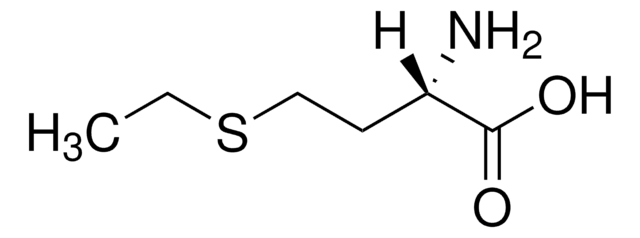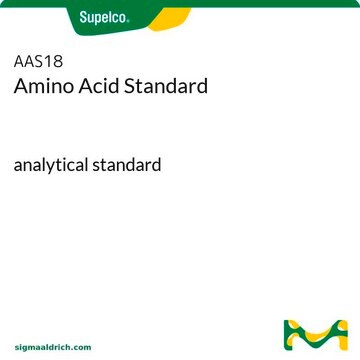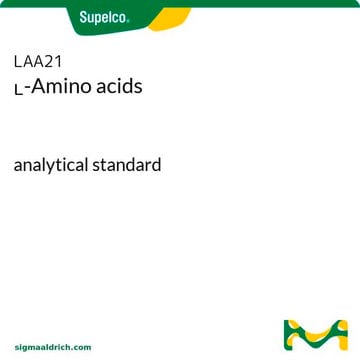E5139
DL-Ethionine
≥95% (TLC)
Sinonimo/i:
DL-2-Amino-4-(ethylthio)butyric acid
About This Item
Prodotti consigliati
Nome del prodotto
DL-Ethionine, ≥95% (TLC)
Livello qualitativo
Saggio
≥95% (TLC)
Stato
powder
Colore
white to off-white
Punto di fusione
269 °C
applicazioni
cell analysis
Temperatura di conservazione
−20°C
Stringa SMILE
CCSCCC(N)C(O)=O
InChI
1S/C6H13NO2S/c1-2-10-4-3-5(7)6(8)9/h5H,2-4,7H2,1H3,(H,8,9)
GGLZPLKKBSSKCX-UHFFFAOYSA-N
Cerchi prodotti simili? Visita Guida al confronto tra prodotti
Applicazioni
- Superoxide dismutase activity as a measure of hepatic oxidative stress in cattle following ethionine administration.: This study evaluates the hepatic oxidative stress in cattle induced by ethionine administration by measuring superoxide dismutase activity. The findings suggest a significant oxidative response, highlighting the role of DL-Ethionine in studying liver oxidative mechanisms (Abd Ellah et al., 2009).
Azioni biochim/fisiol
Avvertenze
Warning
Indicazioni di pericolo
Consigli di prudenza
Classi di pericolo
Eye Irrit. 2 - Skin Irrit. 2 - STOT SE 3
Organi bersaglio
Respiratory system
Codice della classe di stoccaggio
11 - Combustible Solids
Classe di pericolosità dell'acqua (WGK)
WGK 3
Dispositivi di protezione individuale
dust mask type N95 (US), Eyeshields, Gloves
Scegli una delle versioni più recenti:
Certificati d'analisi (COA)
Non trovi la versione di tuo interesse?
Se hai bisogno di una versione specifica, puoi cercare il certificato tramite il numero di lotto.
Possiedi già questo prodotto?
I documenti relativi ai prodotti acquistati recentemente sono disponibili nell’Archivio dei documenti.
Active Filters
Il team dei nostri ricercatori vanta grande esperienza in tutte le aree della ricerca quali Life Science, scienza dei materiali, sintesi chimica, cromatografia, discipline analitiche, ecc..
Contatta l'Assistenza Tecnica.








